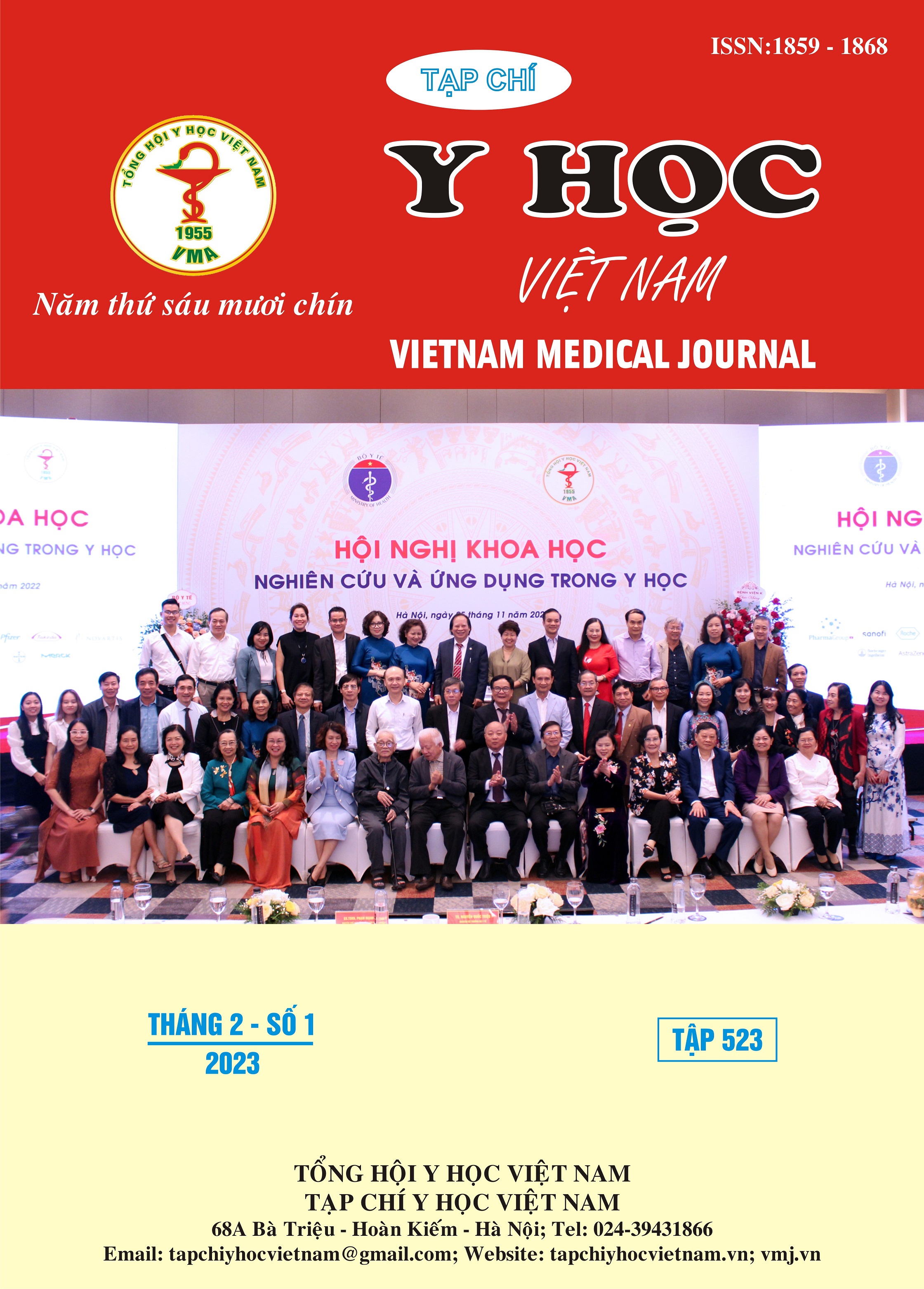EVALUATION OF THE EFFECTIVENESS OF ULTRASOUND-GUIDED CAUDAL ANESTHESIA IN PAIN RELIEF AFTER PERINEAL SURGERY
Main Article Content
Abstract
Objectives: To evaluate the effectiveness of postoperative pain relief in the perineal area of caudal anesthesia with ropivacaine. Subjects and methods: a comparative clinical intervention study. 60 patients divided into 2 groups, group GT caudal with ropivacaine under the guidance of ultrasound, TM group performed postoperative analgesia with intravenous drugs. Both groups were evaluated for pain relief and side effects. Results: The postoperative pain relief effect of both groups was good with VAS scores < 4. The GT group had lower VAS scores at rest and during exercise than the TM group at all times. The analgesia time-out of caudal anesthesia at D12 was 14.67 ± 1.7 minutes. The average pain relief time of the GT group was 8.13 ± 1.3 hours. The rate of need to use analgesics in the GT group was lower than in the TM group with p<0.05. In the GT group, there were 2 patients who touched the bone with needles during anesthesia, 1 patient had a rash. Conclusion: The method of caudal anesthesia under ultrasound guidance by ropivacaine has good analgesic effect for perineal surgery, the method has few side effects and complications.
Article Details
Keywords
Caudal anesthesia, ropivacaine, perineum.
References
2. Trần Đức Thọ (2017), Nghiên cứu tác dụng giảm đau sau mổ bụng trên của levobupivacain phối hợp với sufentanil hoặc fentanyl hoặc clonidin qua catheter ngoài màng cứng do bệnh nhân tự điều khiển, Luận án tiến sĩ y khoa, Bộ môn Gây mê hồi sức, Viện Nghiên Cứu Khoa Học Y Dược Lâm Sàng 108.
3. Nguyễn Hữu Tú (2014), Dự phòng và chống đau sau mổ. Bài giảng Gây mê hồi sức - ĐH Y Hà Nội, Nhà xuất bản Y Học.
4. Harold J Gelfand và các cộng sự. (2011), "Analgesic efficacy of ultrasound-guided regional anesthesia: a meta-analysis", Journal of clinical anesthesia. 23(2), pp. 90-96.
5. Nguyễn Văn Hương (2014), "Đánh giá kết quả điều trị bệnh trĩ bằng phương pháp phẫu thuật longo", Y Học Thực Hành. 903(1), pp. 15-18.
6. Joseph M Neal và các cộng sự. (2010), "The ASRA evidence-based medicine assessment of ultrasound-guided regional anesthesia and pain medicine: executive summary", Regional anesthesia and pain medicine. 35(2), pp. S1-S9.
7. Patil (2018), "Comparison of continuous epidural infusion of 0.125% ropivacaine with 1 mug/ml fentanyl versus 0.125% bupivacaine with 1 mug/ml fentanyl for postoperative analgesia in major abdominal surgery", J Anaesthesiol Clin Pharmacol. 34(1), pp. 29-34.
8. Prasanna Vadhanan (2020), "Ultrasound-Guided Caudal Epidural Anesthesia in Adults for Anorectal Procedures", Anesth Essays Res. 14(2), pp. 239–242.


